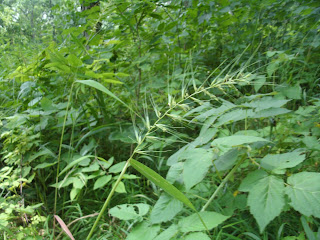The curious and beautiful pink flowers you see scattered around the entrance of Clegg Garden are Lycoris squamigera, sometimes called resurrection lilies or naked ladies. They are a popular garden addition although they are not a native Indiana plant, but rather originated in China or Japan.
Photo taken July 27, 2015.
Link to previous post on Lycoris squamigera:
Link to previous post on Lycoris squamigera:
Link to previous post on Lycoris squamigera:












